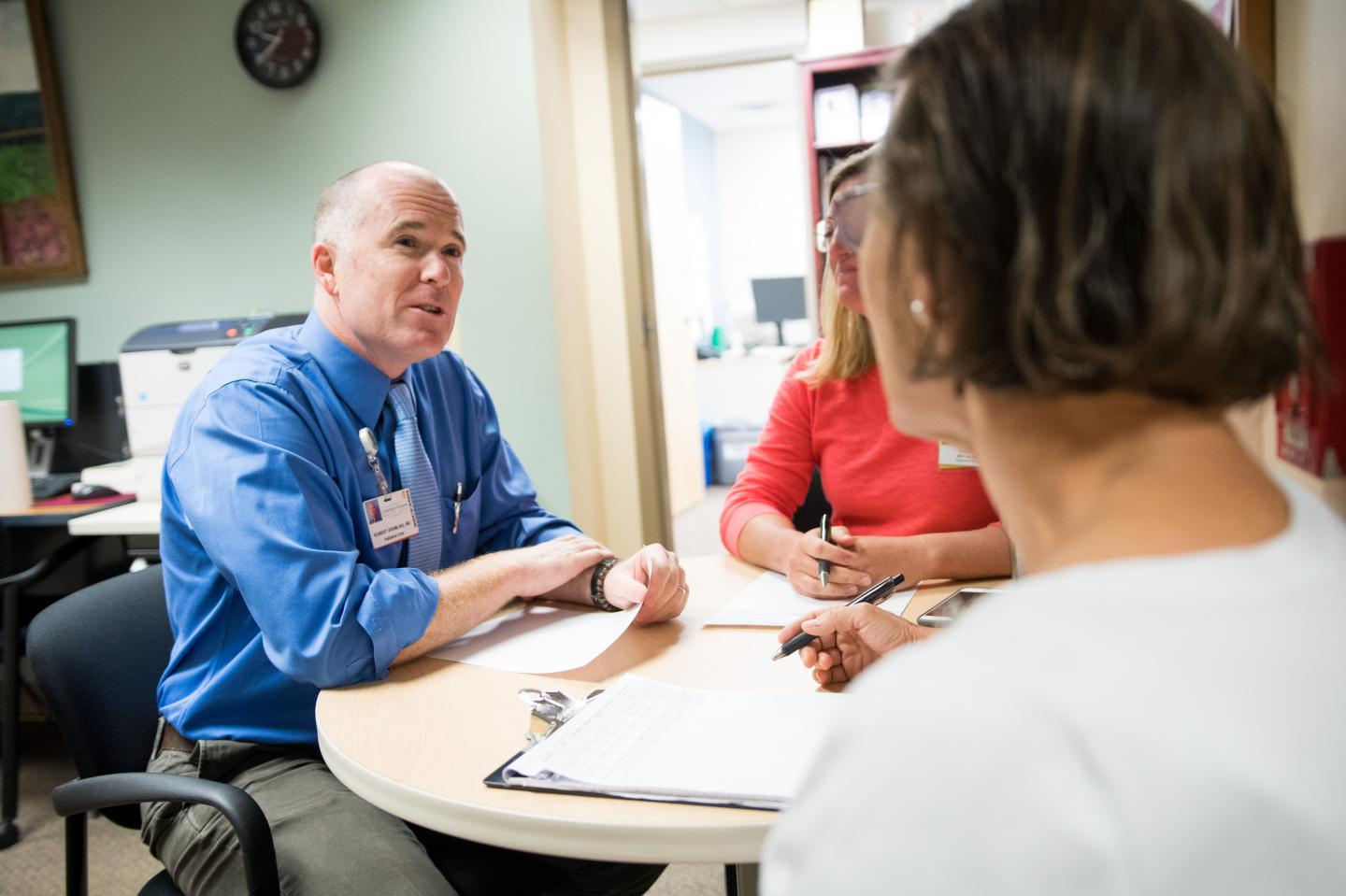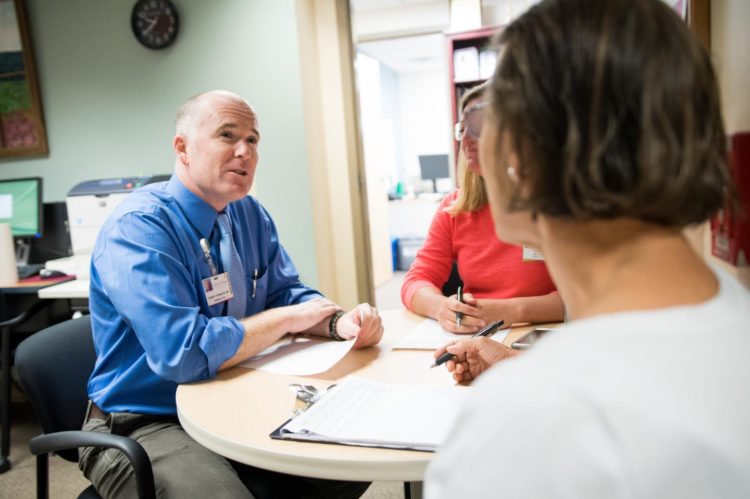
Credit: Andy Duback
Some of the most important, and difficult, conversations in healthcare are the ones that happen amid serious and life-threatening illnesses. Discussions of the treatment options and prognoses in these settings are a delicate balance for doctors and nurses who are dealing with people at their most vulnerable point and may not fully understand what the future holds.
Now researchers at the University of Vermont’s Vermont Conversation Lab have used machine learning and natural language processing to better understand what those conversations look like, which could eventually help healthcare providers improve their end-of-life communication.
“We want to understand this complex thing called a conversation,” says Robert Gramling, director of the lab in UVM’s Larner College of Medicine who led the study, published December 9 in the journal Patient Education and Counselling. “Our major goal is to scale up the measurement of conversations so we can re-engineer the healthcare system to communicate better.”
Gramling and his colleagues wanted to understand the types of conversations that people have around serious illness, to identify the common features they have and determine if they follow common storylines. To do this they borrowed the techniques used in the study of fiction, in which machine learning algorithms analyze the language of fiction manuscripts to identify different types of stories.
Gramling’s team adapted this method to analyze 354 transcripts of palliative care conversations collected by the Palliative Care Communication Research Initiative, involving 231 patients in New York and California. They broke each conversation into 10 parts with an equal number of words in each, and examined how the frequency and distribution of words referring to time, illness terminology, sentiment, and words indicating possibility and desirability changed between each decile.
“We picked up some strong signals,” says Gramling.
Conversations tended to progress from talking about the past to talking about the future, and from sadder to happier sentiments. “There was quite a range, they went from pretty sad to pretty happy,” says Gramling.
The discussions also progressed from talking about symptoms at the beginning of the conversation, to treatment options in the middle and the prognosis at the end. And the use of modal verbs – words like “can”, “might”, and “will” that refer to probability and desirability – also increased as the conversation went on. “At the end there was more evaluation than description,” says Gramling.
The consistent results across multiple conversations show just how much people make meaning out of stories in healthcare, says Gramling. “What we found supports the importance of narrative in medicine,” he says.
More practical applications of the work are still some way off, says Gramling. For now, his team is focused on using it as a tool to identify the different types of conversations that can occur in healthcare. “I think this is going to be a potentially important research tool for us to begin fostering an understanding of a taxonomy of conversations that we have so that we can begin to learn how to improve upon each one of those types,” he says.
That knowledge could eventually help healthcare practitioners understand what makes a “good” conversation about palliative care, and how different kinds of conversations might require different responses. That could help create interventions that are matched to what the conversation indicates the patient needs the most.
“One type of conversation may lead to an ongoing need for information, while another may have an ongoing need for functional support,” says Gramling. “So one of the ways those types can help us is to identify what are the resources we are going to need for individual patients and families so that we’re not just applying the same stuff to everybody.”
A deeper understanding of these conversations, which are often freighted with emotion and uncertainty, will also help reveal what aspects or behaviors associated with these conversations are more valuable for patients and families. That will allow educators to target their training of healthcare professionals to provide the skills needed in palliative care.
Gramling says perhaps the most useful application of the work would be at a systemic level that could monitor how hospitals respond to patients in aggregate – and reward those that allow patients to express and deal with their fears in a better way with more funding.
“We already measure other processes of clinical care, we just don’t do it routinely for actual communication,” he says.
###
Media Contact
Jeff Wakefield
[email protected]
802-578-8830





